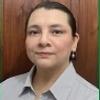Yeast cell walls support higher growth than whole yeast when fed in broiler chicken diets
The objective of this study was to measure the performance response of broiler chickens to diets containing inactive whole yeast and corresponding yeast cell walls. Nine diets based on maize and soybean were offered to 486 Ross 308 broiler chickens from 0 to 35d. The test diets contained inactive dried whole yeast at four levels: (0.5, 1.0, 1.5 and 2.0 g/kg diet) or insoluble, dried and purified yeast cell wall component at the same four levels. These were compared with a control diet (without yeast supplementation) in a 2 x 4 + 1 factorial design. Feed and water were offered ad libitum. Feed intake (FI) and body weight gain (BWG) were measured on d10, d24 and d35, while FCR (corrected for mortality) was calculated from FI and BWG. On d10 and d24, one bird per replicate was electrically stunned, killed by cervical dislocation and key visceral organs were weighed. At d35, two birds per replicate were similarly euthanised and dissected to obtain the relative weight of breast, thighs and drumsticks. There was progressive improvement (p < 0.05) in BWG, FCR and weight of small intestine at d10 and d24 for birds on the higher levels of both whole yeast and yeast cell walls compared to birds on the control diet. At day 35, there was also significant improvement (p < 0.05) in BWG, FCR, small intestinal weight, dressing percentage of carcass, and absolute and relative breast weight for broiler chickens fed higher levels of whole yeast and yeast cell walls compared to birds on the control diet. Although there was no significant (P > 0.05) difference between birds on whole yeast or yeast cell wall diets, birds in the 2 g yeast cell wall/kg diet group tended to perform better in terms of BWG, FCR, small intestinal development, dressing percentage of carcass, as well as in absolute and relative breast weight. It can be concluded that supplementation of diets with inactive whole yeast and yeast cell walls at 2.0 g/kg diet improved broiler chicken performance, with the cell wall components being superior to the whole yeast.
I. INTRODUCTION
II. MATERIALS AND METHODS
III. RESULTS AND DISCUSSION


Castanon J (2007) Poultry Science 86: 2466-2471.
European Commission (2005) Ban on antibiotics as growth promoters in animal feed enters into effect Press Release: http://europa.eu/rapid/press-release_IP-05-1687_en.htm
Gao JH, Zhang S, Wu S, Yu I, Moore Y, Gao Y, Yan H & QI G (2009) Poultry Science 88: 2141-2151.
Gao J, Zang HJ, Yu SH, Wu SG, Yoon JQ, Geo YP & Qi GH (2008) Poultry Science 87: 1377-1384.
Khan ML (2001) In: Poultry Feeds and Nutrition, Kitabistan Publishing Co., Urdu Bazar, Lahore, Pakistan pp.38.
Laximinarayan R, Duse A, Wattal C, Zaidi AKM, Wertheim HFL, Sumpradit N, Vlieghe E, Hara GL, Gould IM, Goossens H, Greko C, So AD, Bigdeli M, Tomson G, Woodhouse W, Ombaka E, Peralta AQ, Qamar FN, Mir F, Kariuki S, Bhutta ZA, Coates A, Bergstrom R, Wright GD, Brown ED & Cars O (2013) The Lancet Infectious Diseases 13: 1057-1098.
Mutassim MA (2013) Turkey Journal of Veterinary and Animal Science 37: 31-37.
Nawaz MS, Sharif M, Ahmad F, Yousaf M & Alam Z (2015) American Journal of Experimental Agriculture 9: 1-6.
Rajput IR, Li IY, Xin X, Wu BB, Juan ZL & Cui ZW (2013) Poultry Science 92: 956- 965.
Roto SM, Rubinelli PM & Ricke SC (2015) Frontiers in Veterinary Science 2: 28.
Stanton TB (2013) Trends Microbiology 21: 1111-1113.

Surely these inactive yeast products are prebiotics.......not probiotics!
Yeast Cell Wall products have been used for many years, originally commercialised by Alltech.
I used them successfully in my Tropical Turkey feeds.


















